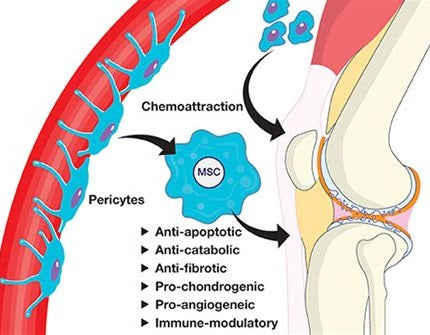
Stem Cell Therapy for Knee Repair and Regeneration
As the field of regenerative medicine continues to evolve, stem cell therapy has emerged as a promising avenue for treating a variety of conditions, particularly those affecting the joints. Knee pain and degeneration, often due to osteoarthritis or injury, can significantly impact mobility and quality of life. This blog explores the potential benefits of stem cell therapy for knee repair, the mechanisms behind its effectiveness, and what the future may hold for this innovative treatment.
Understanding Knee Degeneration
Knee degeneration is commonly associated with osteoarthritis (OA), a condition where the cartilage that cushions the joints wears down over time. This leads to pain, inflammation, stiffness, and a reduced range of motion. Millions of people suffer from knee osteoarthritis, and traditional treatment options range from lifestyle modifications and physical therapy to medications and surgical interventions like knee replacement.
What Is Stem Cell Therapy?
Stem cell therapy involves the use of stem cells to promote healing and regeneration in damaged tissues. Stem cells are unique because they have the ability to develop into different types of cells, including those needed for cartilage repair. In the context of knee treatment, stem cells can potentially help rebuild damaged cartilage, reduce inflammation, and restore function.
Types of Stem Cells Used
1. Mesenchymal Stem Cells (MSCs): These are derived from bone marrow or adipose (fat) tissue and have the ability to differentiate into cartilage, bone, and fat cells.
2. Hematopoietic Stem Cells: While primarily used for blood-related conditions, these can also play a role in healing and inflammation reduction.
3. Induced Pluripotent Stem Cells (iPSCs): These are adult cells reprogrammed to an embryonic stem cell-like state, offering high potential for regeneration.
How Does Stem Cell Therapy Work for Knees?
Stem cell therapy for knee repair typically involves several key steps:
1. Harvesting: Stem cells are collected from the patient’s own body, commonly from bone marrow or adipose tissue.
2. Processing: The collected cells are concentrated and prepared for injection.
3. Injection: The stem cells are injected directly into the knee joint, where they can begin to work on healing damaged tissues.
Potential Benefits
- Cartilage Regeneration: Stem cells may promote the regeneration of cartilage, alleviating pain and restoring mobility.
- Reduced Inflammation: The anti-inflammatory properties of stem cells can help mitigate the pain and swelling associated with knee degeneration.
- Minimal Invasiveness: Compared to traditional surgical options, stem cell injections are relatively non-invasive with shorter recovery times.
Current Research and Efficacy
Research on stem cell therapy for knee repair is ongoing, with clinical studies showing mixed but promising results. Some studies indicate significant improvement in pain and function among patients receiving stem cell injections, while others call for more rigorous research to establish standardized treatment protocols and long-term outcomes.
Challenges and Considerations
While the potential for stem cell therapy is significant, there are challenges:
- Standardization: Currently, there is no universally accepted protocol for administering stem cell therapy, which can lead to variability in outcomes.
- Costs: Stem cell treatments can be expensive, often not covered by insurance, making them inaccessible for many patients.
- Regulatory Status: Stem cell therapies are still considered investigational by regulatory bodies, meaning further research is required to confirm their safety and efficacy.
Other Treatment Options for Knee Pain
For those considering alternatives to stem cell therapy, various options exist:
- Physical Therapy: Tailored exercises can strengthen the muscles around the knee, improving stability and function.
- Medications: Over-the-counter pain relievers and anti-inflammatory drugs can help manage symptoms.
- Orthopedic Braces: These can provide support and reduce pain during movement.
- Surgical Options: In severe cases, procedures like arthroscopy or total knee replacement may be necessary.
Conclusion
Stem cell therapy represents a frontier in the treatment of knee degeneration, offering hope for those suffering from conditions like osteoarthritis. While research continues to explore its efficacy and safety, the potential for cartilage regeneration and reduced inflammation makes it a promising option for knee repair. As with any medical treatment, patients should consult with healthcare professionals to discuss the best options for their individual needs.
By understanding the potential of stem cell therapy, patients can make informed decisions about their treatment options, paving the way for improved mobility and a better quality of life.
Sources:
1. National Institutes of Health - Stem Cell Basics Link
2. Arthritis Foundation - Osteoarthritis Treatments Link
3. American Academy of Orthopaedic Surgeons - Knee Pain Link